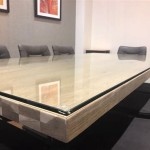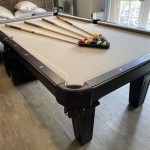Coffee Table Book Stand: Elevating Display and Functionality
The coffee table book stand, a seemingly simple piece of furniture, performs a multifaceted role in modern living spaces. It transcends its basic function of holding books to become an element of interior design, a facilitator of engagement with literature and art, and a practical solution for organizing often oversized and visually striking publications. The following will explore the diverse attributes of the coffee table book stand, encompassing its design variations, material considerations, functional applications, and its impact on the overall aesthetic of a room.
A coffee table book stand is designed to showcase and support large, often heavy, books typically found on coffee tables. These volumes, frequently filled with photographs, illustrations, and detailed text, are intended for browsing and conversation starters. The stand elevates the book, making it more accessible and visually prominent. It prevents the book from becoming lost amongst other items on the coffee table and encourages interaction. Beyond its immediate purpose, the stand also helps to protect the book's cover and spine from excessive wear and tear, preserving its condition over time.
The design of a coffee table book stand varies greatly, influenced by factors such as the intended style of the room, the size and weight of the books to be displayed, and the desired level of visibility. Some stands are minimalist, focusing on clean lines and unobtrusive materials to allow the book to take center stage. Others are more ornate, incorporating decorative elements and luxurious materials to complement the visual richness of the book itself. The angle at which the book is displayed is also a critical design consideration, influencing both the viewing experience and the stability of the stand. A well-designed stand will provide an optimal viewing angle while ensuring the book remains securely in place.
The functionality of a coffee table book stand extends beyond simple display. It can also serve as a organizational tool, helping to declutter a coffee table and create a more visually appealing arrangement. By lifting the book off the surface, the stand frees up space for other items, such as decorative objects, beverages, or remote controls. Some stands are designed with additional features, such as storage compartments or built-in lighting, to further enhance their practicality. The choice of stand should be guided by the specific needs and preferences of the user, taking into account the size and weight of the books to be displayed, the available space on the coffee table, and the desired aesthetic.
Design Variations of Coffee Table Book Stands
The diversity in design for coffee table book stands is extensive. Minimalist designs often feature sleek metal frames or clear acrylic, emphasizing the book's visual content without adding visual clutter. Such stands are ideal for contemporary or modern interiors where simplicity and functionality are prioritized. Conversely, stands crafted from wood, particularly those with intricate carvings or antique finishes, lend themselves to more traditional or eclectic styles. These stands can act as decorative objects in their own right, adding warmth and character to the room. The angle of the display is another crucial design element. Some stands offer a fixed, slightly angled display, while others are adjustable, allowing the user to customize the viewing angle according to their preference. Adjustable stands are particularly useful for accommodating books of different sizes and thicknesses.
Beyond the basic structural design, some stands incorporate additional features. For example, stands with integrated lighting can illuminate the book, creating a focal point in the room and enhancing the viewing experience, especially in low-light conditions. Stands with built-in storage compartments, such as small drawers or shelves, provide additional functionality, allowing the user to store remote controls, magazines, or other small items. The base of the stand can also vary in design, ranging from simple flat bases to more elaborate pedestal designs. The choice of base will influence the stand's stability and its overall aesthetic.
The size of the stand is also a critical consideration. A stand that is too small will not adequately support the book, while a stand that is too large will overwhelm the coffee table. The ideal size will depend on the size and weight of the books to be displayed, as well as the overall dimensions of the coffee table. It is important to measure the coffee table and the books before selecting a stand to ensure a proper fit. Furthermore, the design should consider the book's spine. Some designs are constructed to allow for the book to sit "open" at a desired page, while others are constructed to hold the book closed, displaying its cover effectively. The desired mode of book display informs the overall design approach.
Material Considerations for Coffee Table Book Stands
The materials used in the construction of a coffee table book stand play a significant role in its durability, stability, and aesthetic appeal. Wood is a popular choice, offering warmth, versatility, and a wide range of finishes. Hardwoods, such as oak, maple, and walnut, are particularly durable and resistant to wear and tear. Softwoods, such as pine and cedar, are more affordable but may require more care to prevent damage. The choice of wood will influence the stand's overall aesthetic, with lighter woods lending themselves to more contemporary styles and darker woods to more traditional styles.
Metal is another common material, offering strength, durability, and a sleek, modern aesthetic. Steel and aluminum are popular choices, often finished with powder coating or other protective layers to prevent rust and corrosion. Metal stands are particularly well-suited for minimalist designs, where their clean lines and understated elegance can complement the book without overpowering it. Acrylic is a transparent material that offers a unique aesthetic, allowing the book to appear to float in mid-air. Acrylic stands are lightweight, durable, and easy to clean, making them a practical choice for modern interiors. However, acrylic is more prone to scratches than wood or metal and may require more careful handling.
The choice of materials should also consider the weight of the books to be displayed. Heavy books will require a stand made from sturdy materials, such as hardwood or steel, to ensure stability and prevent the stand from tipping over. Lightweight books may be accommodated by stands made from lighter materials, such as acrylic or softwood. The finish of the materials is also an important consideration. A well-applied finish will protect the stand from damage and enhance its aesthetic appeal. Whether the finish is a natural wood stain, a painted coating, or a polished metal surface, it should be durable and resistant to scratches, stains, and fading.
Functional Applications and Aesthetic Impact
The functional applications of a coffee table book stand extend beyond simply holding a book. It acts as a curator of visual elements within a living space. By elevating the book, the stand draws attention to its cover and encourages viewers to engage with its content. This placement can create a focal point in the room, serving as a conversation starter and a reflection of the owner's interests and tastes. The stand can also be used to create a sense of order and organization on the coffee table, preventing the book from becoming lost amongst other items. By lifting the book off the surface, the stand frees up space for other decorative objects or functional items, such as remote controls or beverages.
The aesthetic impact of a coffee table book stand is significant. It can complement the overall style of the room, adding a touch of elegance, sophistication, or contemporary flair. The choice of materials, design, and finish will all influence the stand's aesthetic appeal. A minimalist stand made from metal or acrylic will blend seamlessly into a modern interior, while a more ornate stand made from wood will add character and warmth to a traditional space. The stand can also be used to create a sense of visual balance on the coffee table. By strategically placing the stand and book, the user can create a visually pleasing arrangement that complements the other elements in the room.
The angle at which the book is displayed also affects its aesthetic impact. A slightly angled display will make the book more accessible and inviting, while a more upright display will emphasize its cover and create a more formal presentation. The choice of angle will depend on the user's personal preferences and the specific characteristics of the book. The stand can also be used to protect the book from damage. By lifting the book off the surface, the stand prevents it from being scratched, stained, or otherwise damaged by spills or other accidents. This is particularly important for valuable or rare books, which should be handled with care. Ultimately, the coffee table book stand enhances both accessibility and preservation of beloved volumes, while simultaneously contributing to the interior design narrative.

The Book Stand Stands Coffee Table Books And

Open Book Stand Wood Display X Recipe

Coffee Table Book Stand Cookbook And Recipe Display

Book Stand Aluminum Black Wilhelmina Designs

Wooden Book Display Mcgee Co Inspired Joinery Design

Clear Acrylic A4 Book Stand Rowen Homes

Livrest Bookstand Willa Gray Home

Acrylic Book Stand Transpa Holder Textbook Reading Rack Home Decor Recipe Coffee Table For Dorm Library Large Com

Hayes Mallory Lucite Book Easel Lisa Interior Design

Table Book Stand Smooth Surface Hold Coffee Sy
Related Posts








